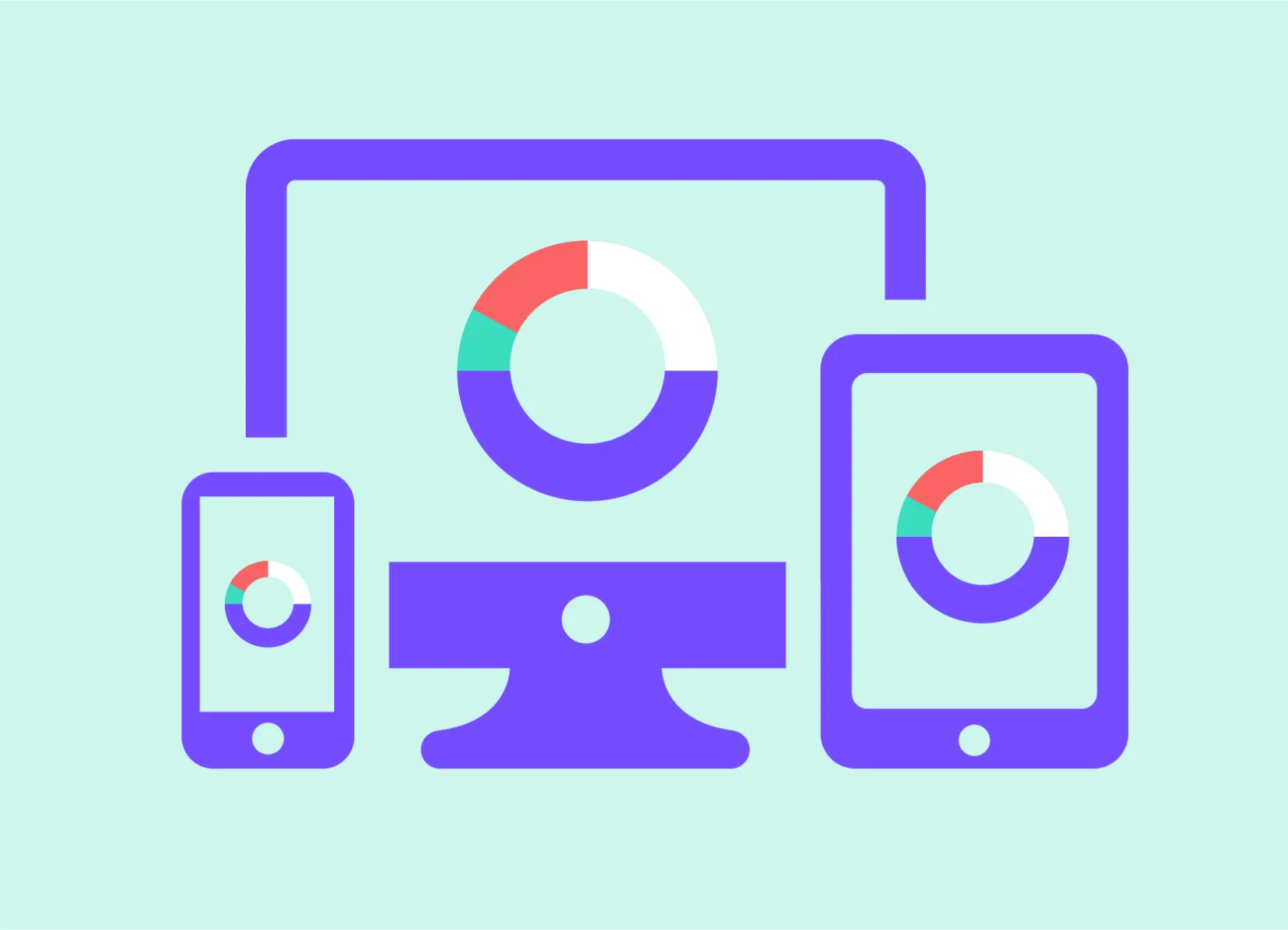Definitely Digital? How to Hoist your Reporting onto the Web

As an agency with a beating digital heart, we get asked about digital reports all the time. Today, we want to answer the most important questions. We come with good intentions and don't want to step on anyone's toes: But some things just need to be said - sorry - written
As an agency with a beating digital heart, we get asked about digital reports all the time. Today, we want to answer the most important questions. We come with good intentions and don't want to step on anyone's toes: But some things just need to be said - sorry - written
Digital first, Fully digital – or what?
Yes, our industry loves a catchy phrase. But whether you want to hold on to traditional print, introduce a hybrid solution or move onto a fully digital report, you still need a long-term strategy. Ask yourself the following questions:
- How big is the target group of potentially interested stakeholders?
- What does that group look for in a report?
- Is there an existing online platform for investor relations?
- Should other reports be digitized as well?
- What are the main messages the report should convey?
We say: Digital first - yes, fully digital - no. According to the Center for Research in Financial Communication at the University of Leipzig, the signs are currently pointing to a digital first approach, but with a strong trend toward hybrid solutions. Our own experience confirms that. A completely digital report is often simply too big a task financially and time-wise. In most cases, it makes sense to use the advantages of digital communication on, say, a microsite for main messages, key figures and storytelling, but to continue offering financial reports as a PDF.

Why offer the financial report as a PDF?
Brokers, analysts and journalists have become accustomed to the standardized form. They can easily download a PDF, search for the relevant data with Command + F and transfer the numbers to the appropriate documents and systems (at least that's how we like to imagine it :) ). Online reporting is less straight-forward. Each report is structured differently: Some figures loom large on the homepage, others are almost hidden somewhere three levels down. One table is stored as an image file, the other comes with a responsive design and you can actually swipe through its columns on a mobile device. While this might make the report more enjoyable, it makes data analysis difficult.
Our tip: A simple download access to the financial report as a web-optimized PDF takes care of the issue.
Will we have more reach online?
We think it's important to set the right expectations here: the target group for online reports is usually limited to shareholders and analysts who are interested in the data once, twice, or, at most, four times a year. The interest for the data doesn’t grow just because it can suddenly be accessed on a mobile device. Maybe the digital report will gain a few more readers, but the audience remains pretty predictable. However, there is one important difference: The reading behaviour online can be measured to a tee. Accesses, reading duration and clicks can be analysed and interpreted for continuous improvements. So: No, not more reach. But definitely more insights.
Which content management system is best?
There are specialized CMS that focus on online reports. It makes sense to check these out and do a cost-benefit analysis. But the most popular systems are proprietary, which means their license costs can be pretty high. That’s why we like to recommend open source systems like Drupal. They can be easily expanded and don’t create dependencies on service providers. Which makes them perfect for hybrid (print and digital) reporting or a long-term online strategy. You can start out with a sleek microsite, take the report to digital first-level later, and then go on to make it fully digital (or go back to a neat microsite).
We like integrated systems. Often the report is already linked on the corporate website, and publicly traded companies often have existing investor relations pages. It's well worth considering using the same CMS to take advantage of synergies and ensure straightforward integration throughout the web presence. Which brings us to the next question...
How much will it cost?
Even if you’re saving on printing costs, going digital will not make your report cheaper at first. You’re simply allocating the resources differently. The initial investment is big, but so is the potential for development in the following years. Once the foundation is done and a scalable CMS chosen, the costs usually shrink noticeably. Fully digital reporting would probably have the greatest ROI, but the initial costs are much higher. With the hybrid forms you’ll have to take design costs for the PDF into account, just like for a print version. The development of the digital report is an additional cost - at least in the first year. However, we like to enable our customers to manage the content themselves in subsequent years. It saves financial resources and doesn’t artificially create a dependency on the agency.

Who is responsible for what?
This is where we get personal. Many good approaches to digital annual reports fail because of communication and organisational issues. And that's on three different levels...
- The technical side: create an overview
It’s key to have an inventory describing which systems are used and where we could draw on potential synergies. From the server structure to data maintenance to digital distribution: the better the systems mesh, the leaner the whole process.
- Within the company: Communicate early
The digital era is forcing us to break down silos and work across departments. Investor Relations, Finance, Corporate Communications, IT and maybe a bit of CRM & Branding - they all come into contact with the annual report sooner or later. Our two cents? Sooner is better than later. If you listen to the needs of all involved parties at the beginning and clarify all responsibilities, you create the basis for a successful integration of the report.
- Across the agencies: Clarify roles
With online reporting, there’s often more than one agency on board. There is the agency that designs the print part; the PR agency with the reporting expertise and, often, another agency for the digital implementation. It’s fair: the online report is a team effort. But with so many people involved, a collective kick-off meeting and the assignment of clear mandates and responsibilities is key.
Does it make sense to use in-house IT resources?
Sure. As an agency partner, we can provide pixel-perfect designs and style guides that are then implemented by your IT resources. Or we can be involved in the concept phase and review the designs later. Co-creation is the way to go. But an external perspective is definitely recommended.
What's our bottom line?
Digital financial reporting has already established itself as state-of-the-art, and other reports (such as sustainability reporting) are increasingly going digital as well. The advantages are obvious: precise measurability, more independence, uncomplicated access, digital distribution. Over time, reporting will be integrated into the digital user journey and corporate communications seamlessly. Strategically important topics, figures and stories will be presented on teaser pages - but even then, we will probably hold on to PDFs for download.



